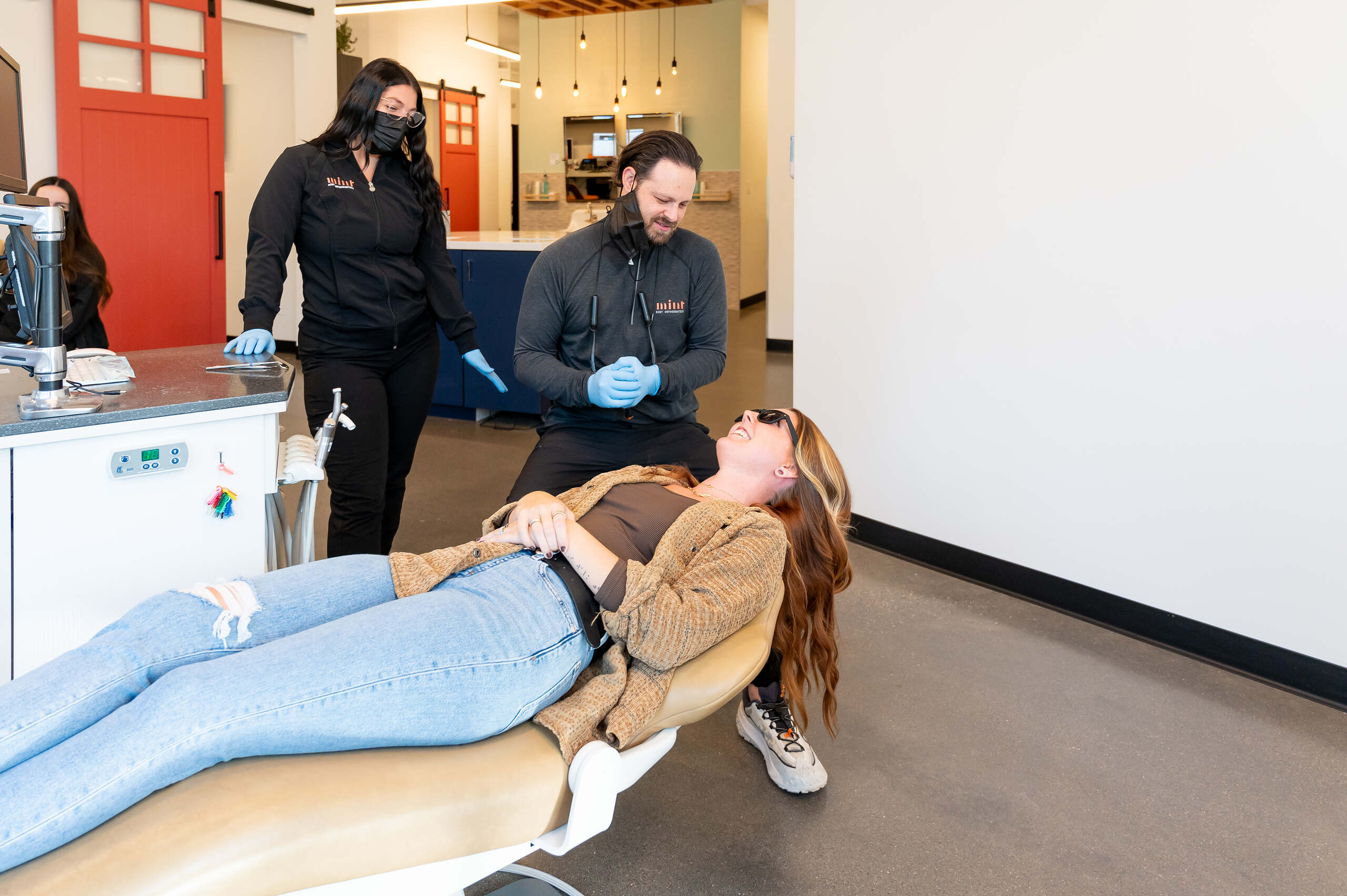6 Signs It’s Time to See an Orthodontist

Fixing that little gap between your teeth or an overbite isn’t just about looks; it helps your smile work smarter, not harder, and sometimes your speech, too.
Teeth don’t just magically straighten themselves. If anything, those “quirks” tend to invite more chaos over time. And while we love a little personality, your smile deserves to be healthy and stunning.
The good news? You’re not imagining things. That nagging thought about a tooth that’s shifting or a bite that feels a little off really is your smile politely waving a red flag and saying, “Hey, I need some attention over here!” Most people ignore those signs or continue to put it off…making the situation worse. But you’re here, reading this, and that already puts you ahead of the game.
So, let’s make it easy: we’ve rounded up the top signs it might be time to see an orthodontist. Spoiler alert: if you spot one (or more), your next best step is booking a free consultation to learn and see what is.
1. Bite Issues
Your bite is how your upper and lower teeth come together. When your teeth can’t figure out how to meet properly, everything from chewing to speaking becomes more complicated. Here are a few common bite issues that can make things feel off:
- Overbite: When your upper teeth stick out too far over your lower teeth. A little overlap is normal, but when it’s excessive, it can cause wear and tear on your teeth, which we don’t want.
- Underbite: When your lower teeth jut out past your upper teeth. This can make chewing tricky and put extra stress on your jaw.
- Openbite: When your upper and bottom teeth don’t touch when you close your mouth, creating a gap. This can make it hard for you to bite into food.
- Crossbite: When some of your upper teeth sit inside your lower teeth instead of outside.
Yes, there are that many types of bites that orthodontics can fix! However, if you leave them untreated for too long, it can lead to other dental problems like jaw pain, tooth decay, gum disease, abnormal wearing of tooth enamel, and difficulty chewing.
2. Crowded Teeth
PERSONAL SPACE? AS IF.
Your teeth are supposed to have personal space. When they don’t, they start to overlap, twist, and make your mouth feel crowded.
Crowded teeth aren’t just an aesthetic issue. They’re harder to clean properly, which could mean you could be at a higher risk for cavities and gum disease.
If your teeth are starting to affect your eating habits or give you trouble while flossing because you can’t get between them, it’s time to come in!
3. Jaw or Mouth Pain
LOVE HURTS, BUT YOUR JAW SHOULDN’T
Your jaw, teeth, or gums are not supposed to hurt during everyday activities. If they are catching your attention through pain, clicking, popping, or locking in your jaw joints, your bite might be the issue.
Sometimes bite problems put extra stress on your jaw muscles and joints, turning them into overworked employees who never got the memo about work-life balance. This all leads to TMJ (temporomandibular joint disorder), which can cause pain in your ears, neck, and shoulders, and can even give you headaches. Don’t just ignore the pain; it’s not normal. This is your body’s way of letting you know something is up!
4. Speech Issues
If you notice your child or yourself is starting to develop a lisp or having difficulty pronouncing certain sounds, it may be a sign that orthodontic treatment is needed. In many cases, speech issues often arise because of misaligned teeth or a bite issue outlined above.
Your tongue needs to be able to move freely and make contact with your teeth in specific ways to create clear sounds. When your bite or alignment is off, it can interfere with this process.
5. Sleep apnea or breathing problems
Orthodontic issues can sometimes contribute to breathing problems and sleep apnea. When your jaw is positioned incorrectly or your mouth is too narrow, it can restrict your airway.
Some signs to watch for is snoring, waking up tired even after a full night’s sleep, or feeling like you can’t breathe well through your nose. Expanding your palate or using a mandibular advancement device that moves your lower jaw forward while you sleep can open your airway and help you breathe easier.
6. Headaches
Frequent headaches, especially tension headaches around your temples, might be connected to bite problems or jaw misalignment. When your bite is off, your jaw muscles are working double time, which can create tension that radiates up to your head.
If you have been dealing with unexplained headaches and traditional treatments aren’t helping, it might be worth coming in for a free consultation to see if your jaw is the culprit.
Are you ready to take the next step?
We understand that deciding to move forward with orthodontic treatment is a big decision, but leaving these issues untreated can make them even worse over time. The sooner they are addressed, the easier and more effective treatment can be.
At Mint Orthodontics, we believe in making orthodontic care approachable and stress-free for busy Minneapolis families. Whether you’re considering Invisalign options or exploring braces for teens, understanding these warning signs can help you make the best decision for your family’s oral health.
Orthodontics is for everyone.
Get started with a free in-person or virtual consultation today.